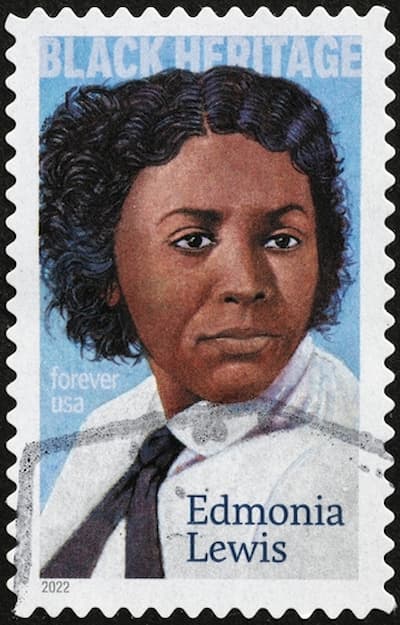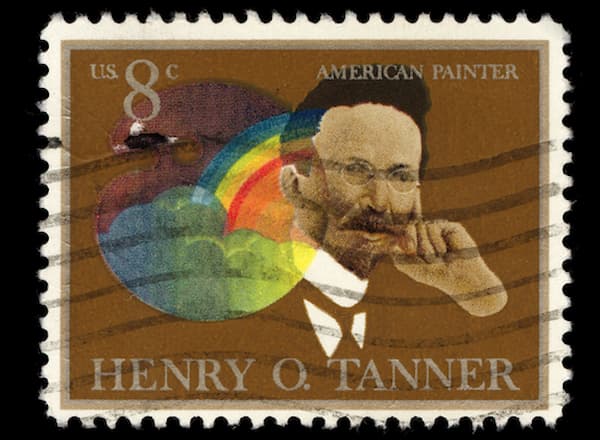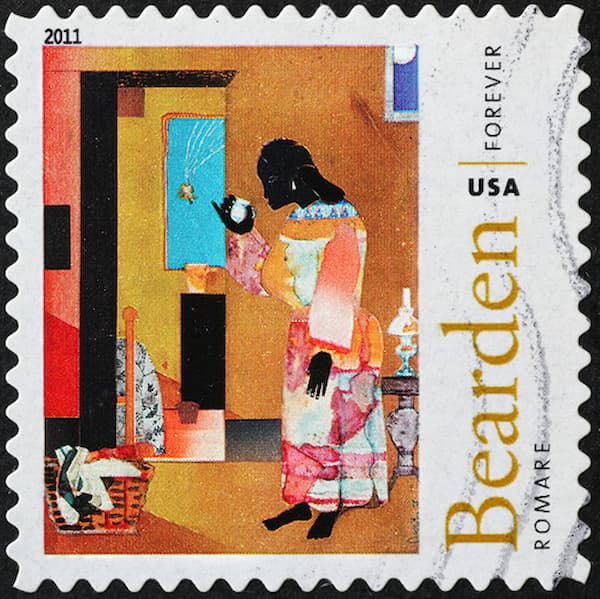
*When we think of artists, our minds automatically jump to the likes of Leonardo da Vinci, Barbara Hepworth, Vincent van Gogh, and Andy Warhol. Can you spot a theme within the list? None of them are Black artists.
For many years, Black artists – famous and un-famous – have been shunned by the general art historical narrative, but that didn’t stop them from creating exceptional art pieces.
These incredibly talented figures have shared powerful portrayals of the triumphs and struggles of African Americans through their paintings, photos, sculptures, and other artworks.
Today, we are shining a long overdue spotlight on the century’s most outstanding Black artists who deserve to be celebrated for their significant contributions to the contemporary art scene.
These are their stories.
Edmonia Lewis
Forgotten amongst the list of prominent artists of her era, many people still are not aware of her. Yet Lewis’ story is one that never ceases to amaze, regardless of how many times you hear it.
Edmonia ‘Wildfire’ Lewis was born in New York in 1844 and was of Native American Ojibwe and Black American heritage. Her mother was a talented crafter who played a pivotal role in igniting her drive and love to pursue arts.
Orphaned at the tender age of five, Lewis was adopted by her maternal aunts; however, it was her brother Samuel who took up the responsibility for her upbringing. Funded by her brother and several abolitionists, Lewis’ artistic endeavors flourished during her time at Oberlin College.
Unfortunately, Lewis’s time at Oberlin was fraught with discrimination by both the community and her peers. She was accused of stealing art supplies and trying to poison her fellow classmate. She was infuriatingly dismissed from the institute.
Lewis then traveled to Boston to pursue a career as a sculptor. There, too, she was consistently denied apprenticeships until she connected with Edward A. Brackett, a notable name with well-known clients, who took her under his wing and honed her talent. Lewis worked under Bracket until 1864, creating sculpture busts of abolitionists that attracted much attention to her work.
Eventually, she saved enough money to move to Rome, where she established her own studio. This sprung up numerous opportunities for the aspiring artist. During this time, Lewis made work in the Neoclassical style, focusing on naturalism and themes associated with African American people.
Her works, including the infamous “The Death of Cleopatra,” appealed to those from elite circles who admired antiquity and cemented her artistic talent. The budding artist commanded large sums of money from her work and continued to receive international acclaim until she died in 1911.
Decades later, the legacy of Edmonia Lewis continues to thrive through her masterpieces and the path she paved for artists and women of color. We admire her fierce determination and unwavering strength, even in times of adversity.
Henry Ossawa Tanner
Globally recognized painter Henry Ossawa Tanner is highlighted in the latest Denver Art Music exhibition, Whistler to Cassatt: American Painters in France. While US art critics often raised issues on Tanner’s race, French reviewers and artists rarely – if ever – paid any heed to it, leading Tanner to refer to the Paris art world as a “perfect race democracy.” While the rich artistic career and life of Tanner span nearly five decades, there’s a lot to be learned and valued from his journey.
Tanner was born in Pennsylvania in 1859. His father, Reverend Benjamin, was a bishop of the African Episcopal Methodist Church, while his mother, Sarah, was a formerly enslaved woman who escaped slavery via the Underground Railroad.
In 1872, the family moved into a row house in North Philadelphia that later became a vibrant hub for Black intellectual life and the place where the emerging artist spent years steeped in the perspectives of the town’s prominent thinkers.
He lived in the house while attending the Pennsylvania Academy of the Fine Arts and studied under painter Thomas Eakins. Despite achieving modest success at the academy, Tanner, being the only Black student, faced daily discrimination and racism. To escape the ordeal, he moved to Paris, where he gained immense fame and success.
“In Paris, no one regards me curiously. I’m simply Monsieur Tanner, an artist from America. Nobody knows or cares about my forebears’ complexion.” He told a magazine writer.
Tanner’s willingness to try different themes and styles led him to improve his artistic abilities consistently. Over the course of his career, he dabbled in orientalism, impressionism, and symbolism, albeit always with a light touch of his own distinct voice to each finished creation. This can be seen in most of his career-defining works, particularly The Banjo Lesson and The Annunciation.
As an African American artist, Tanner was certainly unparalleled, and his legacy is still unsung. Despite his reluctance to be viewed through the lens of his race, it can’t be argued that he left a profound influence on the coming generation of Black artists, proving to them that success could be achieved. Many artists today, including Kerry James Marshall and Romare Bearsden, continue to draw inspiration from Tanner’s work.
Romare Bearden
Considered one of the most recognizable American artists of the 20th century, Romare Bearden’s work depicted African American culture and expertise in thought-provoking and creative ways.
Born in 1911 in North Carolina, Romare Bearden lived a life marked by exceptional talent, encompassing a wide range of scholarly and intellectual interests, including world art, history, literature, and music. Bearden was also a celebrated humanist and a source of inspiration for many aspirants.
He began college at Lincoln University, transferred to Boston University, and earned his degree in education at New York University (NYU). Being a top student at NYU, the young lad took extensive art courses and was a lead editor and cartoonist for the monthly journal The Medley.
Despite the humble and respectful beginnings, money remained a problem for Bearden. The situation took a turn for the worse once he graduated and struggled to get his artwork to sell. Bearden was Black, so most people didn’t want to see his work. For nearly thirty years, Bearden worked as a social employee for the New York City Department of Social Services.
The reason he kept doing this for so long was because none of his art was selling. However, things quickly turned favorable once he bagged his first solo show in Washington, DC, which led to the take-off of Bearden’s career.
Growing up during the Harlem Renaissance, Bearden was exposed to many of the jazz greats, which reflected upon his early works. The interplay among the characters and elements of jazz made his photomontage compositions stand out. This fun, carefree character, however, soon vanished once the civil rights movement began; his works became more socially conscious and representational.
Although his creations still showed signs of abstract art, they revolved more around African American enslaved crafts, such as patchwork quilts and pictorial images from their mainstream life.
By age 58, Bearden had reached a level of income and recognition that enabled him to purchase his own studio and become a full-time artist. He earned commissions and grants and was often called for honorary visits at universities. The legendary artist passed away in 1988 at the age of 76 after a long, tiring battle with bone cancer.
It goes without saying that Bearden still holds an esteemed place in the art community as a collaborator, mentor, and creator of works full of life, color, and boundless energy. His paintings and collages, many of which are currently on display in Jenkins Johnson Gallery San Francisco, draw on contemporary issues and are always in dialogue with other artists, politics, and popular culture.
So, that’s it, folks! But, before we go, here are some other notable mentions: Kehinde Wiley, Kara Walker, Jean Michel Basquiat, and Jacob Lawrence. Once you are done with our list, you can dig out other famous Black artists to celebrate the brushstrokes of diversity that changed art history.
MORE NEWS ON EURWEB: Edmonia Lewis: Forgotten Black Artist to be Honored with US Postage Stamp
We Publish News 24/7. Don’t Miss A Story. Click HERE to SUBSCRIBE to Our Newsletter Now!








